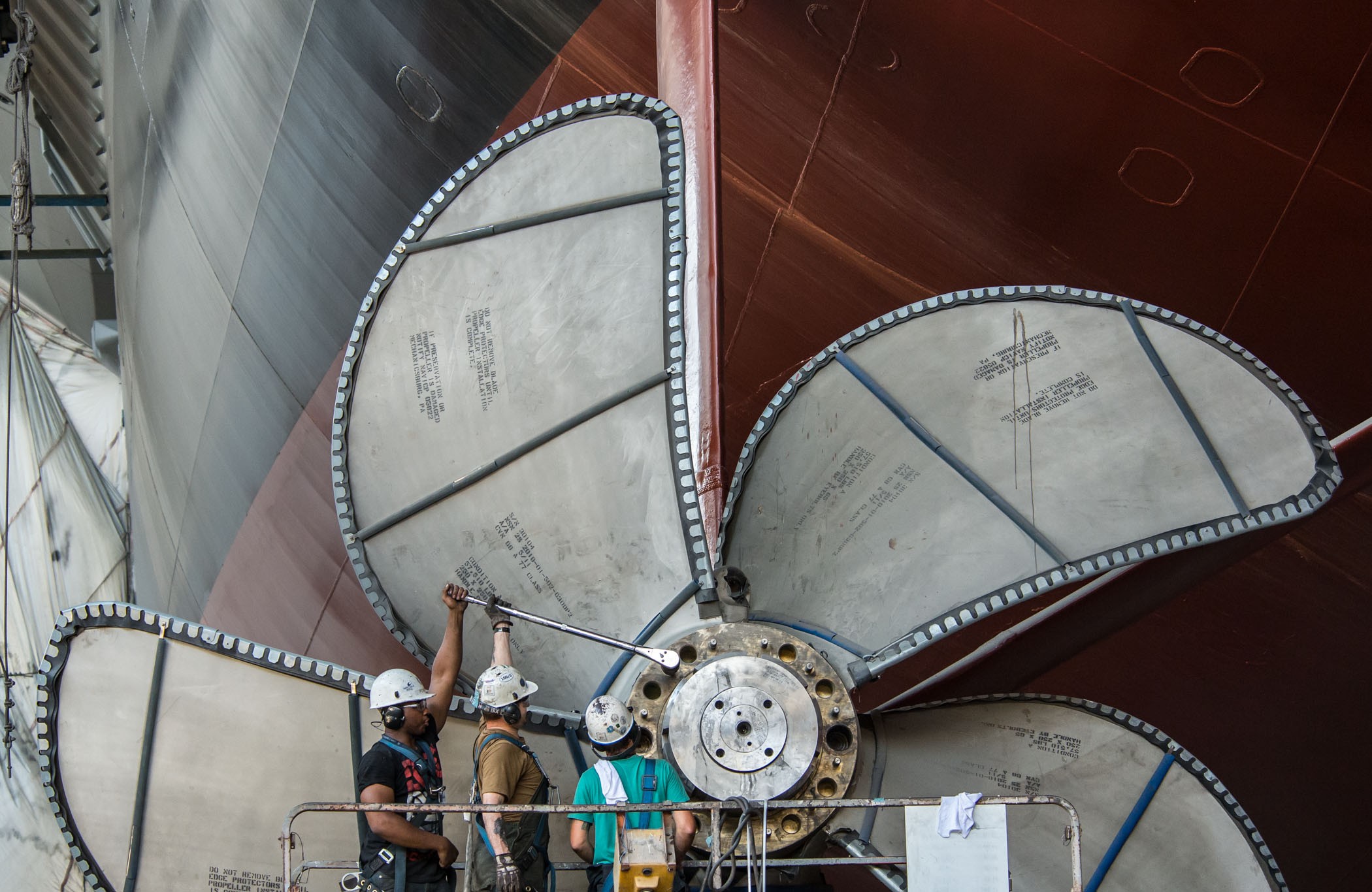Table Of Content

Battery power is used during turnaround navigation in ports when the onboard diesel-electric generators are switched off. As of 2019, Corvus Energy delivered its innovative product line "Orca ESS" to 200+ vessel conversion/upgrade projects, totaling 200+ MWh. The powerplant is controlled by ABB's PEMS (Power and Energy Management System), which also optimizes the onboard energy use. Ships' batteries are charged using hydropower (water-generated electricity), which as of 2019 accounts for ~7% of the USA's total electricity production.
How Big Is A Cruise Ship Propeller
The first factor to consider is the ship’s power and speed requirements. The propeller must be able to generate enough thrust to propel the ship through the water at the desired speed. Larger ships with higher power requirements will typically have larger propellers to generate the necessary thrust. It’s also important to mention the material used in constructing cruise ship propellers.
Can a Cruise Ship Propeller Pull You Under?
The blades must be checked for cracks, erosion, and other forms of damage. Any damage found must be repaired promptly to prevent further damage. Gearing allows an engine to move at a more efficient and faster speed.
How fast do cruise ship propellers spin?
Viking Jupiter Delivered with Thordon Bearings Propeller Shaft System - The Maritime Executive
Viking Jupiter Delivered with Thordon Bearings Propeller Shaft System.
Posted: Mon, 25 Feb 2019 08:00:00 GMT [source]
The technology uses heat exchangers that evaporate a carrier fluid circulating in a closed system. This gas (at 2-bar pressure) drives a turbine, then a 100 kW generator produces electricity. After that, the gas is cooled (in a vacuum chamber) and liquefied. Then Heat exchangers cool the carrier fluid to temperatures around 20 C / 68 F. Gas fuel eliminates all the bad emissions - soot and sulfur oxides.
AIDA's LNG-powered cruise ships
Wartsila Marine technologies aim to optimize ship performance, but also allow to locate deviations from normal parameters of equipment and engines. This allows emerging problems and engine fault sources to be fixed before they occur. These are only used when the vessel is moving at a constant speed.
How Do Azipods Work Compared to Traditional Propulsion Systems?
The size, shape, and construction of cruise ship propellers are carefully optimized to ensure maximum efficiency and performance. The main advantage of the diesel-electric cruise ship engine systems is efficiency as they allow main engines to operate near the most efficient speed, no matter if the ship is moving at 5 or 25 knots. Overall, cruise ship propellers are engineered with precision and attention to detail, taking into account factors such as pitch, blade number, cavitation, and material composition. The goal is to create a propeller that balances efficiency, durability, and performance to ensure smooth and reliable navigation of these colossal vessels. The size of a cruise ship propeller is a significant factor in determining the ship’s speed, efficiency, and maneuverability.
The new systems and technologies included engine control and monitoring systems, safety and fuel efficiency equipment. All ships rely on propellers/screws to be pushed through the water, providing forward and reverse motion. Airplanes, for example, require tremendous propeller speeds to provide the forward motion, but ship propellers don't need to turn so fast and rely on torque power. Therefore, ships travel slowly and rarely top 30 knots (for more info follow our speed-link above). The size of a cruise ship propeller is directly proportional to the speed of the ship.
Marine diesel engines
Large cables snake through all the ships to distribute electrical power. They carry power from generators to switchboards, through passageways, public rooms, crew and passenger cabins. If the electrical cables aren't truly redundant, even ships that feature two engine rooms suffer power failure. RMS Queen Mary 2's four main diesel engines are above the keel, with two smaller gas turbines on top-deck (aft of the funnel).
Horror moment cruise ship passenger has foot RIPPED OFF by boat propeller in front screaming tourists... - The Sun
Horror moment cruise ship passenger has foot RIPPED OFF by boat propeller in front screaming tourists....
Posted: Fri, 14 Apr 2023 07:00:00 GMT [source]
"Rotor Sail Solution" is an innovative technology developed by the company Norsepower Ltd (Finland) in 5 years. It reduces fuel consumption and also COx emissions up to 900 tons per year (depending on wind conditions). AIDAprima (2016) is one of the world's most technologically advanced cruise vessels. Rolls Royce is the manufacturer of the world's largest GAS marine turbine "Rolls-Royce MT30".
Also, they typically have four blades – propellers typically have between three and five, but the azipods used on most cruise ships have four. More propellers can improve performance, but for a cruise ship, it’s not necessary. Three azipod propellers are generally the accepted number for most modern cruise ships. Four isn’t really necessary, and three helps to keep the fuel consumption in check while providing plenty of power and steer to make cruises comfortable. This is one of the most common myths about cruise ship propellers.
The maneuverability of a cruise ship is another important factor that determines the size of its propeller. The more maneuverable the ship needs to be, the larger the propeller needs to be in order to provide the necessary turning force. The benefits to this are greater fuel efficiency, increased ship safety in bad weather, and decreased distance required for stopping. Steam in these vessels is no longer used to make the pistons move. Instead, fuel ignition generates pressure, pushing the pistons down and up while turning a crankshaft that’s connected to the propeller shaft.

Both your boat's hull and drive train significantly impact propeller spin speed. Each boat has a different hull design, and the type you have could influence how efficiently the propeller spins. Make sure you're familiar with your boat's hull design by consulting the owner's manual. To generate effective thrust, a propeller must turn at optimal revolutions per minute (RPM). Given that different propellers have varying maximum RPM ranges, selecting the right propeller for your boat can greatly impact its performance. The hull directly impacts the resistance and drag experienced by the boat as it moves forward.
Depending on the manufacturer, these blades typically are pitched in a way that propels the boat forward or backward when the transmission is engaged. The term “pitch” refers to how far forward or reverse a propeller will theoretically travel through a solid material (picture a screw twisting into a wood block). For example, a prop with a 12-inch pitch will theoretically move through 1 foot of solid material with each full rotation. While we're on the topic of propulsion, it's important to understand how propeller pitch affects your boat's performance. The pitch essentially converts the torque from the propeller shaft speed into thrust by deflecting the water astern in the sea.
Analogous to a traditional table fan, a ship propeller has a central boss which is like the backbone of the entire arrangement. It mates with the rotating shaft which corroborates with the engine room mechanism. A prop that is too large or too small can cause overloading and decreased performance. Consult your owner's manual for the appropriate prop size and pitch for your boat's engine. Dive into our article and navigate the waters of boat engine RPM effortlessly.


No comments:
Post a Comment